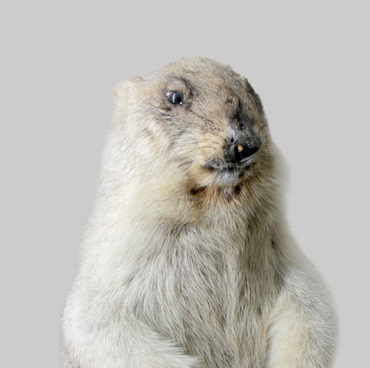The halls of the Republic of Bashkortostan National Museum has a special display case that houses two meteorites. One of them, the Red Key meteorite, fell to the Earth on May 4th, 1946 near the village of Rodnik, in the Karmaskalinskiy Region in the Republic of Bashkiria.
A local beekeeper noticed it falling. Going up to the place where it had fallen, all he saw was a small, gray, melted stone. The beekeeper hid the unusual find in his house. When a scientific expedition arrived at the place where it had fallen, the beekeeper told the researched about what occurred, and gave them the meteorite he found. Scientists expected to find other debris, but a thorough search did not yield any results.
Meteorites bear names derived from the name of the area in which they are found. The Karmaskalinskiy meteorite was named Krasniy klyuch (Red Key) because a village with that name is located not far from the place where it fell.
The ‘Red Key’ meteorite weighs 3,960 grams. It was handed over to the Committee on Meteorites at the USSR Academy of Sciences for further study, and soon experts were able to determine its mineral composition.
Out of the valuable substances in the meteorite, diamonds and gold were found in very small doses. It is believed that meteorites, especially iron ones, contain only 0.0004% gold, that is, if gold were extracted from all the meteorites gathered together on the Earth, then it would not amount to even one kilogram.
A local beekeeper noticed it falling. Going up to the place where it had fallen, all he saw was a small, gray, melted stone. The beekeeper hid the unusual find in his house. When a scientific expedition arrived at the place where it had fallen, the beekeeper told the researched about what occurred, and gave them the meteorite he found. Scientists expected to find other debris, but a thorough search did not yield any results.
Meteorites bear names derived from the name of the area in which they are found. The Karmaskalinskiy meteorite was named Krasniy klyuch (Red Key) because a village with that name is located not far from the place where it fell.
The ‘Red Key’ meteorite weighs 3,960 grams. It was handed over to the Committee on Meteorites at the USSR Academy of Sciences for further study, and soon experts were able to determine its mineral composition.
Out of the valuable substances in the meteorite, diamonds and gold were found in very small doses. It is believed that meteorites, especially iron ones, contain only 0.0004% gold, that is, if gold were extracted from all the meteorites gathered together on the Earth, then it would not amount to even one kilogram.
Meteorites contain radioactive elements in even less quantities than gold — uranium, radium, thorium, and helium, according to which experts give these celestial stones ‘birth certificates’, and determine their ages.
The results of the studies on the chemical and mineral composition of meteorites confirm the hypothesis put forth by scientists about the unity of matter in the Universe.
The meteorite’s “age” is hundreds of millions of years. The surface of the meteorite is covered with regmaglypts, typical depressions on the surface. They are formed as a result of the “drilling” action of the earth’s atmosphere on meteorites during their movement through the atmosphere at astronomical speeds.
The results of the studies on the chemical and mineral composition of meteorites confirm the hypothesis put forth by scientists about the unity of matter in the Universe.
The meteorite’s “age” is hundreds of millions of years. The surface of the meteorite is covered with regmaglypts, typical depressions on the surface. They are formed as a result of the “drilling” action of the earth’s atmosphere on meteorites during their movement through the atmosphere at astronomical speeds.
Regmaglypts can have a variety of shapes: round, oval, elongated, or polygonal. It depends on the location of the surface on which regmaglypts were formed in relation to the direction of the meteorite’s movement through the atmosphere. On the lateral sides, generally speaking regmaglypts have an elongated shape, and on the posterior surface round or polygonal shapes are more common. Regmaglypts are one of the typical features that distinguish meteorites from rocks on the Earth.



